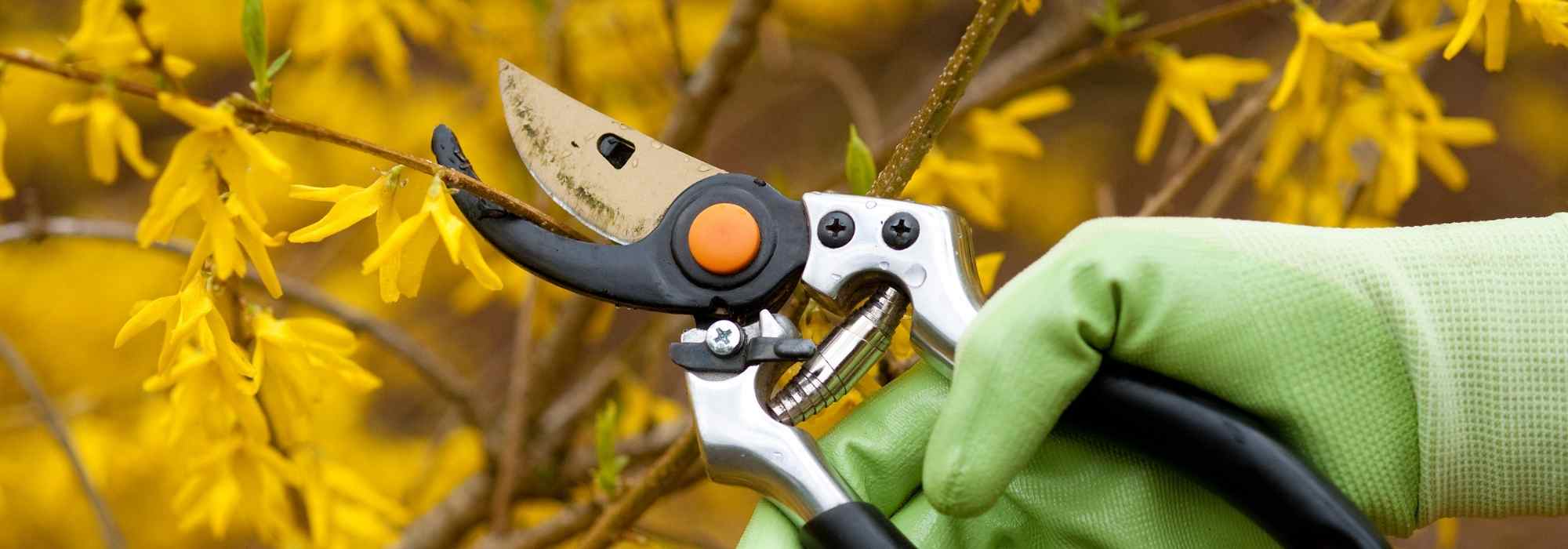
How to prune a shrub?
Prune, rejuvenate, and restore shine to a shrub
Contents
Pruning shrubs is an essential step! Over time, some flower less and produce dead wood. It is necessary to cut back the main branches of your plants, meaning to prune them very short. However, rejuvenating a bush requires suitable tools as well as knowledge of the plants that can withstand this type of pruning. Discover how to give a second youth to your favourite bushes and enjoy abundant flowering once again.
Why pruning a shrub?
After a few years, some woody plants in your garden tend to flower less and lose their attractive shapes.
Cutting back a bush or shrub (lavender, rosemary, thyme, broom…), will stimulate your plant to produce new shoots, thus rejuvenating your specimen. These new shoots are sometimes sought after, as they are very colourful (as seen in Cornus).
This radical pruning will benefit the aesthetics of the plant, which will regain a more compact shape, as well as a much more abundant flowering. It also allows your sparsely-leaved shrubs at their bases to regain a denser appearance.
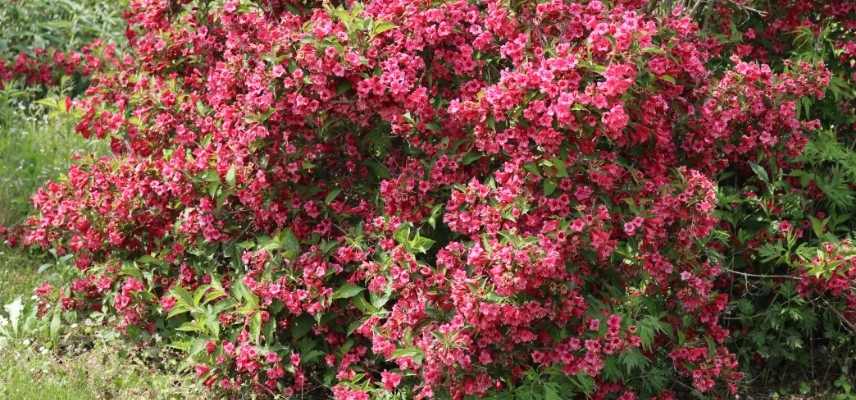
Cutting back a bush greatly increases the density of many species (here a spring-flowering Weigelia)
Which plants are affected?
We can classify them into two main categories:
Shrubs
Acrotonous shrubs: the buds present on the upper parts of the plant are favoured, and the shrub tends to grow taller. This phenomenon is more pronounced depending on the species.
It has one or more main branches originating from the stump.
This category includes dogwoods, small willows, hawthorns, camellias, privets, viburnums, berberis, Buddleias, Forsythia, weigelas, Philadelphus, Choisya…
For these well-sized shrubs, pruning is carried out when your plant becomes too large, unsightly, and less floriferous.
Shrubs
These are miniature shrubs that do not have a main trunk and do not exceed 4 m. They are basitonous: the buds at the base of the plant have greater access to the sap, resulting in a bushy form of the plant.
These small woody plants are naturally bushy and have numerous more or less fragile branchings at their bases.
Shrubs subjected to pruning are mainly aromatic plants such as lavenders, Perovskia, bushy sages, and hyssop. Some species of spiraeas, caryopteris, or even heathers can also be pruned. Fuchsia, Leycesteria, less vigorous Buddleia, Hypericum, Japanese quinces, flowering currants, symphoricarpos, hydrangeas, cotoneasters, and other rugosa roses can also undergo this type of pruning.
Small fruits such as blackcurrants and redcurrants can also be pruned when their wood is aging.
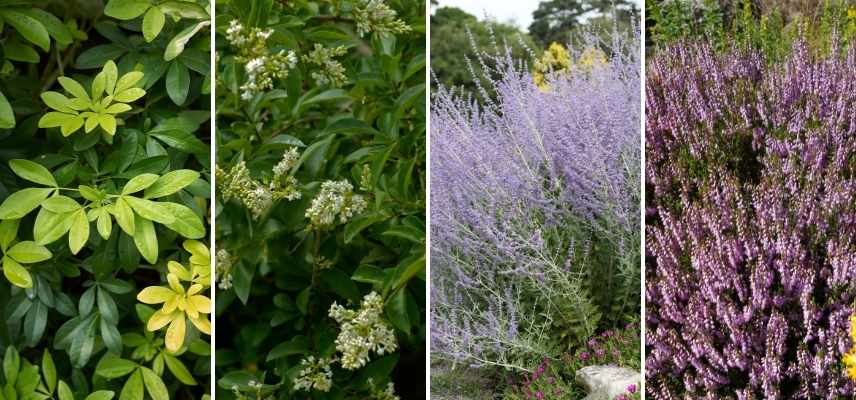
Shrubs like Choisya or Privet, as well as shrubs like Perovskia and Heathers, are well-suited to pruning
The necessary equipment
Before you begin, gather the following tools:
- Pruning shears (disinfected and well-sharpened)
- A saw, including one with a curved blade (Japanese)
- A good pair of gloves for thorny species
- A branch cutter
Don’t forget to check the condition of your tools by sharpening and disinfecting them properly. This step will ensure a clean cut and reduce the risk of infection. For more information, check our article: Clean, maintain, and protect your gardening tools.
Read also
How to prune early flowering bushesWhen and how to prune a bush or a shrub?
Pruning a bush
Specifically, for bushes, the operation involves cutting the main framework branches or the trunk of the plant.
Generally, we leave 10 to 15 cm of the main branches above the ground, but it is also possible to prune the trunk down to the stump. Hazels, hawthorns, dogwoods, lilacs, elderberries, and many others will regrow vigorously after this treatment. A multitude of dormant buds beneath the bark will break through to create new vigorous shoots.
To avoid traumatizing the bush and unnecessarily weakening it, prune preferably during the dormant period (from October to March). However, pruning can take place after spring flowering. In any case, avoid pruning during frost or extreme heat.
Adapt the cutting tool to the diameter of the branch or trunk. For larger ones, use a saw. Always cut at an angle to allow water to drain from the wound created. To prevent the bark from tearing down to the stump, always make a saw cut a few centimetres below your cutting line. The saw cut should, of course, be on the side of the direction in which the branch will fall.
Pruning a shrub
Basitonous shrubs with bushy forms can be pruned either after flowering or at the end of winter. Using pruning shears or loppers, cut the branches at their bases, leaving a few buds in reserve for future regrowth. In general, leave shoots 5 to 10 cm above the ground. Your shrub will regrow without issue using this method.
Small fruits like currants or blackcurrants will undergo the same treatment: cut the branches aged three years and older down to the ground to give these shrubs a boost.
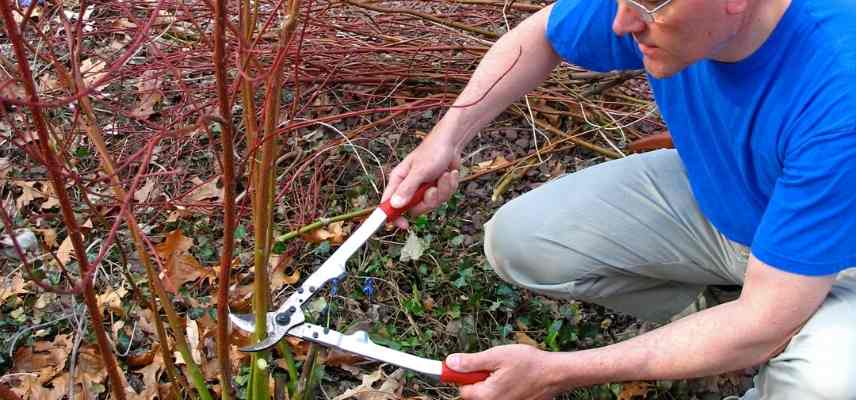 Here, the pruning of a decorative wood Cornus
Here, the pruning of a decorative wood Cornus
Keep in mind that many shrubs and bushes only flower on branches developed in the previous season. When pruning certain species, you may have to wait a year (at least) before seeing them flower again.
Finally, some shrubs benefit from being pruned each year at the flowering level: among these are Caryopteris, Perovskia, and lavateras.
Another pruning method
Some gardeners prefer to carry out a less drastic pruning over three years. To do this, simply prune the oldest branches each year, without cutting more than one-third each time. The advantage is that there is no gap when completely cutting back a bush, allowing it to gradually regenerate without depriving us of flowers.
- Subscribe!
- Contents
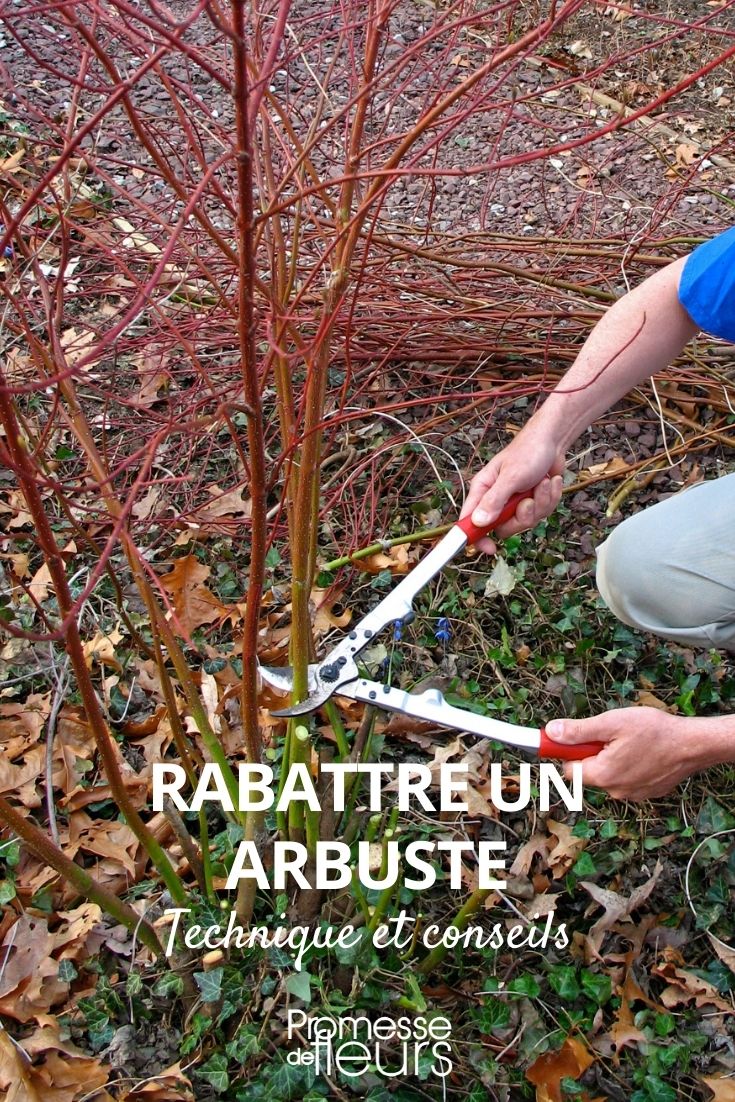































Comments